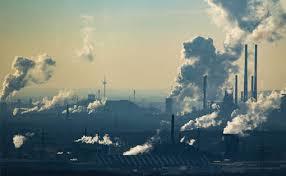Building Design for the New Economy

"Our goal is a delightfully diverse, safe, healthy and just world with clean air, water, soil and power... economically, equitably, ecologically and elegantly enjoyed." This is a beautiful quote from William McDonough. Professor of Architecture, Designer, Environmental Consultant to world leaders in manufacturing, and inspired soul. He addresses here the same principles of The New Economy, and supports the knowledge that there is a direct relationship between life, the living environment and the built environment. Have you ever been in a built environment that gave you a sense of calm and nourishment, that awakened your senses and gave you a feeling of deep rest and recuperation? We feel calm, nourished, awakened and alert when the air quality in a space is healthy... when form follows function... when space, light, color, and texture combine in an economy and elegance of design.
Nature is the gold standard against which our built environments should be measured. On its own, Nature has a finely tuned balance, but problems occur for both people and the environment when synthetic or man-made materials are introduced and the essential balance is lost. Ecological, sustainable building means not just sustaining our ecosystems, but human health as well. Mind, body and soul are affected in a myriad of ways by a dwelling. And it is clear that the once finely tuned relationship between humankind and nature is out of balance.
Let's take a look at the 4 values that William McDonough mentioned in his quote and how they relate to sustainable building.
Economical, Equitable, Ecological, Elegant.
First let's look at Economical... A quote from local Environmental Inspector & Building Consultant Jon Cotham... "It's important to remember that with the rising cost of health care and lost productivity from illness, that anything we can do to maintain our good health is financially beneficial". Our health is priceless and when buying, renovating or building a new home or business, its ability to nurture health should be our top priority. As more consumers look to healthy, sustainable building materials, the costs have come more in line with conventional materials. Contrary to popular belief, often the healthier alternatives are no more expensive, or even more economical in the long run due to a longer lifecycle and greater durability, or by reducing energy costs.
We have the ability to shift industry if we persevere in either buying less of something, or in buying more of the sustainable alternatives. Many of us will spend additional money to buy natural, organic and fair trade food & clothing. Why not take these into consideration when buying building materials? History has shown that consumers' have great power with their spending habits. Runaway consumerism, has played a significant role in the collapse the economy and of the ecosystem, given the energy, water, land and other resources required to produce all the "stuff" people buy and quickly dispose of. Exciting opportunities for sustainability lie in the beginnings of a revolution that replaces materials made using dirty, wasteful methods with those resulting from clean processes patterned after Nature's cyclical patterns. Since the 1990s leading manufacturers have adopted sustainability standards that have increased revenue through risk management, increased competitive advantage, cost reduction and product differentiation. They have demonstrated that such sustainable practices not only work but are economically viable.
Equitable. Most of us are all familiar with this term in regards to Fair Trade practices, which is an important consideration in buying practices for building materials. It is important to look to manufacturers who ensure healthy working conditions, fair labor practices and fair compensation. But, do we consider how we can be more equitable to our children, our pets and the elderly that occupy our dwellings? They may not have much voice, if any, in the decisions made concerning building materials, and yet they are the ones whose health is most at risk. Children are more affected by indoor contaminants than adults because their respiratory, immune & neurological systems are still developing. And, their breathing zone is much closer to the ground where most contaminants originate.
The next value is Ecological. When considering materials for your built environment, think about the impact your decision has on the world at large. Fortunately, there is a current awareness that Building Operations... that is heating, cooling and lighting... is having a huge impact on our outside air quality. Surprisingly, when we compare sources of Co2 emissions, we see that the manufacturing of Building Materials alone is actually higher than the levels produced by Automobiles. The manufacturing of Portland Cement used in concrete, and the gypsum used in drywall are among the biggest polluters, but there are alternatives.
The destruction of global health is mirrored by a similar impact on our personal health. Tens of thousands of chemicals being used today in the home and elsewhere are known to be toxic. The alarming growth of diseases such as childhood asthma, autism, and fibromyalgia - have become cause for researchers to look for links between these chemicals and our health, and indeed many have been found. Both the EPA and American Lung Association urge us to not use materials with PVC or formaldehyde added which can include vinyl flooring, carpet pad & backing, plywoods and particleboards found in cabinets and furniture, textiles, paints, stains and sealers. Studies have shown that poor indoor air quality affects attendance and productivity in schools and the workplace air pollution control in textile industry.
Elegant and Sustainable go hand in hand. The dictionary defines Elegant as "of a high grade or quality". With today's selection of sustainable building materials, elegance does not need to be compromised. There are a wide variety of materials that are truly elegant not only because of their high grade or quality, but also because they are truly pleasing and sophisticated. Sustainable building no longer is limited to a rustic or industrial looks.
